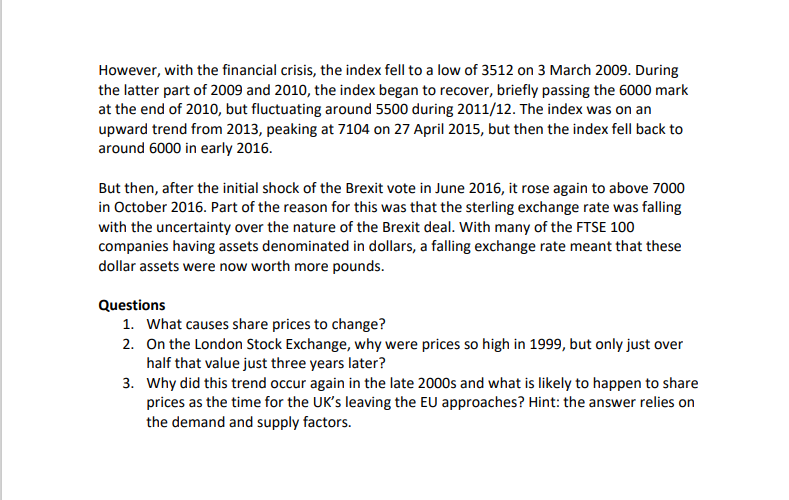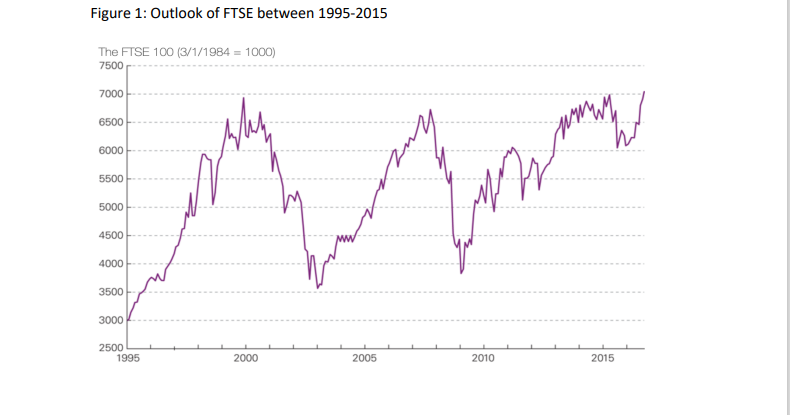Firms that are quoted on the stock market can raise money by issuing shares. These are sold on the ‘primary stock market’. People who own the shares receive a ‘dividend’ on them, normally paid six-monthly. The amount varies with the profitability of the company. People or institutions that buy these shares, however, may not wish to hold on to them for ever. This is where the ‘secondary stock market’ comes in. It is where existing shares are bought and sold. There are stock markets, primary and secondary, in all the major countries of the world. There are 2292 companies (as of October 2016) whose shares and other securities are listed on the London Stock Exchange and trading in them takes place each weekday. The prices of shares depend on demand and supply. For example, if the demand for Tesco shares at any one time exceeds the supply on offer, the price will rise until demand and supply are equal. Share prices fluctuate throughout the trading day and sometimes price changes can be substantial. To give an overall impression of share price movements, stock exchanges publish share price indices. The best known one in the UK is the FTSE 100, which stands for the ‘Financial Times Stock Exchange’ index of the 100 largest companies’ shares. The index represents an average price of these 100 shares. The chart shows movements in the FTSE 100 from 1995 to 2016. The index was first calculated on 3 January 1984 with a base level of 1000 points. It reached a peak of 6930 points on 30 December 1999 and fell to 3287 on 12 March 2003, before rising again to a high of 6730 on 12 October 2007.
Firms that are quoted on the stock market can raise money by issuing shares. These are sold
on the ‘primary stock market’. People who own the shares receive a ‘dividend’ on them,
normally paid six-monthly. The amount varies with the profitability of the company.
People or institutions that buy these shares, however, may not wish to hold on to them for
ever. This is where the ‘secondary stock market’ comes in. It is where existing shares are
bought and sold. There are stock markets, primary and secondary, in all the major countries
of the world.
There are 2292 companies (as of October 2016) whose shares and other securities are listed
on the London Stock Exchange and trading in them takes place each weekday. The prices of
shares depend on demand and supply. For example, if the demand for Tesco shares at any
one time exceeds the supply on offer, the price will rise until demand and supply are equal.
Share prices fluctuate throughout the trading day and sometimes price changes can be
substantial.
To give an overall impression of share price movements, stock exchanges publish share price
indices. The best known one in the UK is the FTSE 100, which stands for the ‘Financial Times
Stock Exchange’ index of the 100 largest companies’ shares. The index represents an
average price of these 100 shares. The chart shows movements in the FTSE 100 from 1995
to 2016. The index was first calculated on 3 January 1984 with a base level of 1000 points. It
reached a peak of 6930 points on 30 December 1999 and fell to 3287 on 12 March 2003,
before rising again to a high of 6730 on 12 October 2007.


Step by step
Solved in 5 steps









